The Ultimate Guide to Crankshafts: Function, Types, and Maintenance Tips
关于作者: Dr. Alistair Finch is a veteran mechanical engineer with over 25 years of experience specializing in engine design, manufacturing, and diagnostics. Holding a Ph.D. in Automotive Engineering, his expertise spans across internal combustion engine components, with a particular focus on crankshaft metallurgy, fatigue analysis, and precision machining. Dr. Finch frequently consults on complex engine rebuilds and performance optimization projects, sharing his deep knowledge to enhance durability and efficiency in various industrial and automotive applications.
Have you ever stopped to consider the sheer complexity and ingenuity hidden within the heart of an engine? While many components play vital roles, there's one unsung hero that truly defines an engine's ability to create power: the **crankshaft**. To be honest, it's far more than just a spinning rod; it's the component responsible for translating the explosive force of combustion into usable rotational energy that drives vehicles, powers generators, and propels machinery across countless industries. This ultimate guide aims to demystify the crankshaft, delving into its fundamental function, exploring its diverse types, and providing essential maintenance tips to ensure its longevity and peak performance.
The Indispensable Core: Understanding the Fundamental Function of Crankshafts
At its very essence, the **function of a crankshaft** is to convert the reciprocating (up-and-down) motion of the pistons into rotational (circular) motion. Think about it: inside an engine's cylinders, fuel ignites, pushing the pistons downwards with immense force. Without a mechanism to harness and transform this linear thrust into continuous rotation, all that power would be wasted. This is precisely where the crankshaft steps in, acting as the central backbone of the engine's lower end.
Interestingly enough, this conversion isn't as simple as it sounds. Each piston is connected to the crankshaft by a **connecting rod**. As the piston moves down, it pushes the connecting rod, which in turn rotates a specific offset section of the crankshaft known as a crankpin. This intricate dance, repeated thousands of times per minute, generates the torque needed to turn wheels, spin propellers, or drive industrial equipment. Many experts agree that the design precision of the crankshaft is paramount, as any imbalance or imperfection can lead to catastrophic engine failure. Frankly speaking, it's a testament to engineering excellence that such a critical component can withstand the tremendous dynamic forces it experiences daily.
A Deep Dive into Crankshaft Anatomy and Operational Principles
To truly appreciate the crankshaft's role, it's worth noting its intricate anatomy. A typical crankshaft is composed of several key parts, each meticulously designed for strength and efficiency. The **main journals** are the sections that rest within the engine block's main bearings, supporting the entire crankshaft and allowing it to rotate smoothly. Perpendicular to these are the **crankpins** (also known as connecting rod journals), which are the eccentric, offset portions where the connecting rods attach. These offsets are what create the leverage needed for rotation.
Connecting the main journals to the crankpins are the **crank webs** (or crank arms). These robust sections transmit the forces and ensure structural integrity. Crucially, many crankshafts also feature **counterweights**, strategically placed masses that balance the rotating and reciprocating forces of the connecting rods and pistons. Without these counterweights, the engine would experience severe vibrations, leading to excessive wear and noise. In my experience, proper crankshaft balancing is one of the most critical aspects of engine smooth operation.
The materials and manufacturing processes are also vital. Most crankshafts are made from either forged steel or cast iron. **Forged crankshafts** are generally stronger and more durable, making them suitable for high-performance or heavy-duty applications due to the refined grain structure achieved through the forging process. **Cast crankshafts**, on the other hand, are more economical to produce and are widely used in mass-produced consumer engines. Regardless of the material, the surfaces of the journals and crankpins are precision-machined and often hardened through processes like induction hardening or nitriding to resist wear.
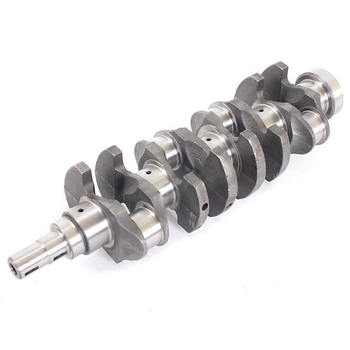
Diversity in Motion: Exploring the Different Types of Crankshafts
Just as engines come in various configurations, so do **crankshaft types**, each optimized for specific engine designs and performance requirements. The fundamental principle remains the same, but the layout and number of components can vary significantly.
One primary classification is based on the number of cylinders and their arrangement. For inline engines (e.g., a 4-cylinder or 6-cylinder inline engine), the crankshaft will have a corresponding number of crankpins, typically arranged in a specific firing order to ensure smooth operation. For V-engines (like V6 or V8), the crankshaft design becomes more complex, often featuring shared crankpins for opposing cylinders or distinct crankpins for each cylinder bank, influencing the engine's firing order and sound characteristics. Boxer engines, with horizontally opposed cylinders, also utilize unique crankshaft designs.
Another distinction is between **built-up crankshafts** and **monoblock crankshafts**. Monoblock crankshafts, the most common type today, are cast or forged as a single, continuous piece. This design offers high rigidity and is suitable for most applications. Built-up crankshafts, conversely, are assembled from several individual sections pressed or bolted together. While more complex to manufacture, they can be advantageous for very large engines (like those found in marine diesels) where casting or forging a single, massive piece would be impractical, or for certain custom applications requiring modularity.
Furthermore, the **material types** themselves can define a crankshaft's application. High-strength alloy steels are used for racing or heavy-duty industrial crankshafts to withstand extreme pressures and rotational speeds. Ductile cast iron is a common choice for passenger vehicle engines, offering a good balance of strength and cost-effectiveness. The choice of crankshaft type is a critical design decision made by engine manufacturers, directly impacting an engine's performance, durability, and cost.
Keeping the Heart Pumping: Essential Maintenance Tips for Crankshaft Longevity
Given the crankshaft's critical role and the immense forces it endures, proper **maintenance tips** are not just advisable – they are absolutely essential for ensuring the longevity and reliability of any engine. Neglecting this component can lead to costly and often irreparable damage.
Firstly, and perhaps most importantly, is **lubrication**. The crankshaft rotates within its main and connecting rod bearings, and these metal-on-metal surfaces require a constant supply of clean, high-quality engine oil to prevent friction and wear. Regularly changing your engine oil and filter according to the manufacturer's recommendations is non-negotiable. Dirty or degraded oil loses its lubricating properties, leading to accelerated wear on the crankshaft journals and bearings, which can quickly spiral into more severe problems.
Secondly, **avoiding engine overheating** is crucial. Excessive heat can cause the crankshaft metal to soften, warp, or even seize, especially if lubrication is compromised. A properly functioning cooling system is therefore indirectly a critical part of crankshaft maintenance. Regularly check coolant levels and ensure your engine temperature remains within its normal operating range.
Thirdly, pay attention to any unusual **vibrations or noises**. A healthy engine should run smoothly. Persistent knocking sounds from the lower engine, especially under load, could indicate worn main or rod bearings, which, if ignored, will quickly damage the crankshaft journals. Addressing these symptoms early can prevent major engine rebuilds.
Finally, ensure that any engine work or modifications are performed by qualified professionals. Improper installation of components, incorrect torque settings on fasteners, or imbalanced rotating assemblies can put undue stress on the crankshaft, significantly shortening its lifespan. Frankly speaking, investing in quality parts and professional service is always cheaper than replacing an entire engine due to crankshaft failure.

Common Crankshaft Issues and Proactive Problem Solving
Even with the best intentions and diligent maintenance, crankshafts can encounter problems. Understanding these common **crankshaft issues** allows for proactive problem-solving and potentially prevents complete engine failure.
One of the most prevalent issues is **journal wear**. This occurs when the main journals or crankpins wear down due to inadequate lubrication, contaminated oil, or excessive load. Worn journals lead to increased clearances with the bearings, resulting in reduced oil pressure, knocking noises, and eventually, bearing failure. In my experience, this is often a symptom of neglected oil changes or using an incorrect oil type.
Another serious concern is **cracking or fracturing**. This typically happens due to fatigue, especially in highly stressed areas like the fillets (the rounded edges where the journals meet the webs). Overloading the engine, severe vibrations, or even manufacturing defects can contribute to fatigue cracks. Once a crack begins, it can propagate rapidly, leading to catastrophic failure where the crankshaft literally breaks apart. This is often an unrepairable condition.
**Bearing failure** is intimately linked to crankshaft health. When main or rod bearings fail, they can score or gall the crankshaft journals, rendering them unusable without extensive repair, such as grinding and polishing (known as 'regrinding' or 'machining undersize'). Causes include oil starvation, debris in the oil, incorrect bearing installation, or simply the end of their service life.
What should you do if you suspect a crankshaft issue? The key is **early detection**. Listen for persistent knocking, rumbling, or ticking sounds from the engine's bottom end. Monitor your oil pressure gauge; a significant drop can be a red flag. If you notice metal shavings in your oil filter during a change, that's a strong indicator of internal wear. While minor journal wear might be corrected through regrinding and using oversized bearings, severe damage or cracks generally necessitate crankshaft replacement. It's worth noting that replacing a crankshaft is a major engine overhaul, demanding precision and expertise.
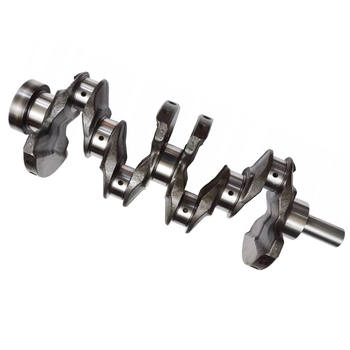
The Future of Crankshafts: Innovations and Our Commitment to Excellence
Even in an era where electric vehicles are gaining prominence, the internal combustion engine continues to evolve, and with it, the crankshaft. Future innovations in crankshaft technology are focusing on lighter materials, advanced manufacturing techniques, and improved designs to reduce friction and enhance efficiency. Materials like advanced high-strength steels and even experimental composites are being explored to reduce rotational mass, which directly improves engine responsiveness and fuel economy. Technologies like precision forging and superfinishing are pushing the boundaries of durability and smoothness.
While electric powertrains don't require traditional crankshafts, the fundamental principles of power transfer and component durability remain critical in many other industrial applications where traditional engines are still essential. Think about heavy machinery, marine vessels, and power generation – the demand for robust and reliable crankshafts isn't going anywhere.
This is where our company steps in. We understand the critical importance of a perfectly manufactured and meticulously maintained crankshaft. Our expertise lies not only in providing high-quality crankshafts that meet stringent OEM standards but also in offering precision machining and repair services. We use state-of-the-art equipment and employ experienced technicians who can diagnose crankshaft issues, perform regrinding services, and ensure proper balancing, effectively extending the life of your engine's most critical component. We believe that an informed customer is an empowered customer, which is why we’re committed to sharing comprehensive insights like those found in this guide. How much could proactive crankshaft maintenance save you in the long run? A significant amount, to be honest.
In summary, the crankshaft is undeniably the beating heart of any reciprocating engine. Its intricate design, the diversity of its types, and the vital role it plays in converting linear motion into rotational power make it a fascinating subject. Understanding its function, recognizing the different types, and adhering to strict maintenance protocols are paramount for anyone involved with engines, from casual enthusiasts to professional mechanics. By prioritizing proper lubrication, addressing issues promptly, and seeking expert help when needed, you can ensure that this indispensable component continues to perform reliably for years to come.
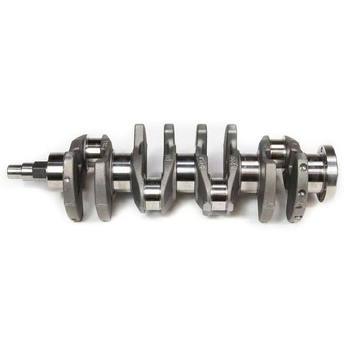
For more detailed information, please visit our official website: The Ultimate Guide to Crankshafts: Function, Types, and Maintenance Tips
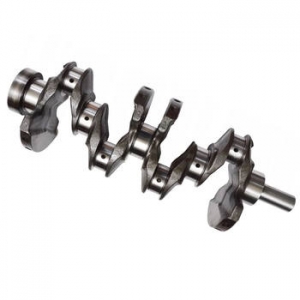 The Ultimate Guide to Getting
The Ultimate Guide to Getting
 The Unsung Heroes: Unveiling t
The Unsung Heroes: Unveiling t
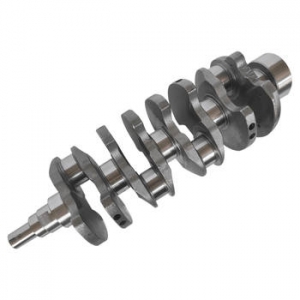 Unlocking Power: A Deep Dive i
Unlocking Power: A Deep Dive i
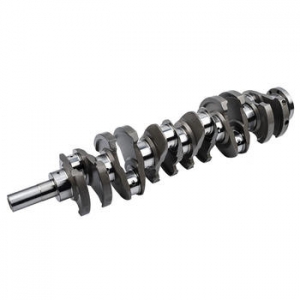 The Ultimate Industrial Cranks
The Ultimate Industrial Cranks
